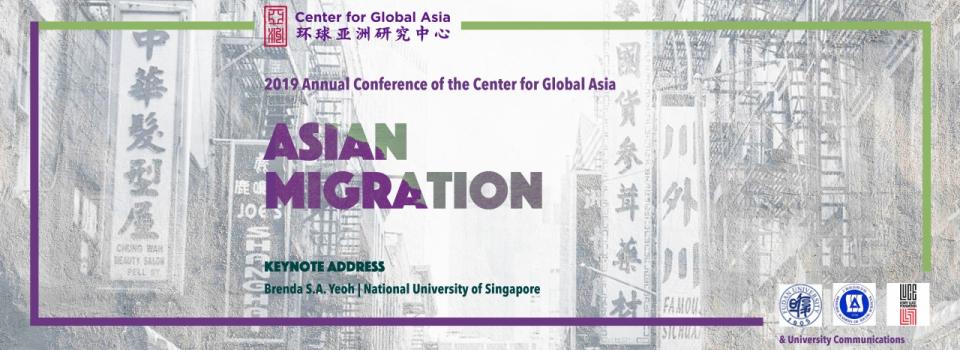
Conference Website: https://cga.shanghai.nyu.edu/2019-annual-conference/
Overview:
Asia, arguably the world’s most diversified yet fragmented geographic region, has never been a single, bounded landmass but a porous network of corridors where transports of people have linked the region’s expansive lands, peninsulas, archipelagoes, and much-coveted seawaters. Studying the movement of communities within and beyond Asia therefore means not just explaining the material circumstances and discourses driving the phenomenon of migration, or investigating the infrastructures, sociocultural formations, ecological changes, and new modes of knowledge that result; it means also confronting the conceptual elasticity of the term Asia and uncovering the historical connectedness of individual Asian societies.
The Center for Global Asia at NYU Shanghai highlights “Asian migration” as the theme of its fourth annual conference. Between 1850 and 1930 there was an unprecedented growth in Asian migration due to the widespread political and economic transformations in Asia associated with European expansion. Around seven million people from Qing and Republican China settled in Southeast Asia during this period. Many also went to South Asia and Europe. There were others who arrived in Africa and the America, embedded within the indentured labor movement or drawn by the California Gold Rush. Similarly, there were about six million Indians who settled in Southeast Asia and millions of others who reached Africa, Australia and the Americas as indentured labors. Migration of Chinese and Indians continued during most of the twentieth century, some of these people were part of re-migration process while others returned to their ancestral homeland. The geographic mobility of the Japanese, Koreans, Southeast Asians, West Asians within and beyond Asia paralleled the movement of Chinese and Indians. This movement of Asians, which continues to the present-day, shaped the history and culture of different regions of the world, fostered cross-regional connections, led to the spread and mixing of religious beliefs, created different forms of cuisines, and complicated the concepts of national and cultural identities. Increasingly, it also prompts us to discuss what it means to move at all, and to adapt, transition, and challenge privileged forms of social embodiment and alliance in radical ways.
The conference explores several facets of travel and mobility, conditions of human connectivity, as well as their potential risks and costs, in a context where the fates and decisions of differently empowered individuals—such as marital and labor migrants, refugees, overseas students, returnees, transgender communities, asylum seekers, transnational families, and so on—are often intertwined with the structural changes in both the sending and receiving societies. It examines multiple sites associated with Asian migration within Asia as well as those in Africa and the Americas, and addresses issues of identity formation, contestation, imaginaries, socio-economic entanglements, and political networking, among others. The key objective is to understand Asia’s internal and external connections through the movement of people.


